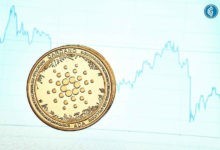The Rise of XRP: 5 Reasons Why It’s Bull Run Is Far From Over

The price of the sixth largest cryptocurrency in the market, XRP, has been on an uptrend since Monday, likely driven by Bitcoin’s price action and the overall bullish market trend. As a result, XRP’s market capitalization has also increased from $20 billion to a new yearly high of $25 billion, further solidifying its uptrend.
As of this writing, XRP is being traded at $0.470, coming close to reaching the $0.50 level after breaking out to the $0.490 mark. This represents a week-long gain of over 23%, which aligns with the upward trend of other major cryptocurrencies.
What Is Driving XRP’s Bullish Trend?
The XRP Ledger (XRPL), a decentralized blockchain technology supported by the fintech company Ripple, has played a key role in XRP’s current uptrend.
According to a recent study by the market research firm Messari, despite facing external pressure from US regulatory authorities over the potential classification of XRP as a security, the XRPL aims to provide a digital payment infrastructure not just for individuals but also for existing financial entities such as central banks.

As seen in the chart above, the adoption of the XRPL has increased significantly since February, which is believed to be contributing to the rise in XRP’s price. This wider adoption could be driving up demand for the token as more institutions and individuals are using the XRPL for cross-currency transactions and other use cases.
The surge in demand for XRP resulting from the XRPL’s increased adoption could play a crucial role in driving its price above the $0.50 level. As more buyers enter the market and compete for XRP’s limited supply, its price will likely increase.
Moreover, as awareness grows about XRPL’s potential to revolutionize the global financial system, investors may become more interested in investing in XRP, which could further fuel its price growth.
The research firm also emphasizes the significance of the XRPL’s Proof-of-Association (PoA) consensus algorithm in the broader financial system. This algorithm validates transactions and ensures the network’s security, making it a crucial component of the XRPL’s infrastructure.
The PoA consensus algorithm is particularly significant for the XRPL’s primary use case of enabling cross-currency transactions, where transaction speed is crucial to ensure timely and cost-efficient settlements.
Positive Outlook For XRP As Holdings Set To Increase And Boost Its Price
Messari’s report also notes that all nodes on the XRPL use the same free and open-source software, “rippled,” to validate and process transactions. Validators responsible for proposing and voting on transactions must hold a specific amount of XRP to participate in the consensus process.
Per the report, the increased participation of validators in the network ensures its security and efficiency. It drives up the demand for XRP as more validators acquire the token as collateral. The resulting increase in demand could lead to a rise in the price of XRP.
Additionally, the creation of new blocks, or “ledgers,” created every 3-5 seconds helps to ensure timely and efficient transaction processing on the XRPL, which both consensus and validation require 80% thresholds, being important for the XRPL’s primary use case of facilitating and settling cross-currency transactions.
Messari’s report highlights that the XRPL’s features include several functionalities, such as Issued Currencies (IOUs) that provide support for multiple assets, the capability of authorized trust lines that allow issuers to manage which wallets can interact with their tokens, and a central limit order book that enables low-liquidity IOUs trading.
Overall, XRP’s recent uptrend can be attributed to increasing institutional adoption, positive regulatory developments, and positive market sentiment, positioning XRP on the verge of achieving a milestone. If it breaches the $0.50 zone after losing the level in October 2022.

Image from Unsplash, chart from Tradingview






 Bitcoin
Bitcoin  Ethereum
Ethereum  Tether
Tether  USDC
USDC  TRON
TRON  Dogecoin
Dogecoin  Cardano
Cardano  Bitcoin Cash
Bitcoin Cash  LEO Token
LEO Token  Chainlink
Chainlink  Stellar
Stellar  Litecoin
Litecoin  Hedera
Hedera  Monero
Monero  Dai
Dai  OKB
OKB  Cronos
Cronos  Ethereum Classic
Ethereum Classic  Gate
Gate  VeChain
VeChain  Cosmos Hub
Cosmos Hub  Algorand
Algorand  KuCoin
KuCoin  Stacks
Stacks  Tether Gold
Tether Gold  Zcash
Zcash  Theta Network
Theta Network  IOTA
IOTA  Tezos
Tezos  TrueUSD
TrueUSD  NEO
NEO  Polygon
Polygon  Ravencoin
Ravencoin  Dash
Dash  Decred
Decred  Zilliqa
Zilliqa  Qtum
Qtum  Synthetix Network
Synthetix Network  Status
Status  0x Protocol
0x Protocol  Basic Attention
Basic Attention  Siacoin
Siacoin  Holo
Holo  DigiByte
DigiByte  Nano
Nano  Enjin Coin
Enjin Coin  Ontology
Ontology  Waves
Waves  Hive
Hive  Lisk
Lisk  Pax Dollar
Pax Dollar  Steem
Steem  Numeraire
Numeraire  BUSD
BUSD  Huobi
Huobi  NEM
NEM  OMG Network
OMG Network  Bitcoin Gold
Bitcoin Gold  Ren
Ren  Bitcoin Diamond
Bitcoin Diamond  Augur
Augur  HUSD
HUSD